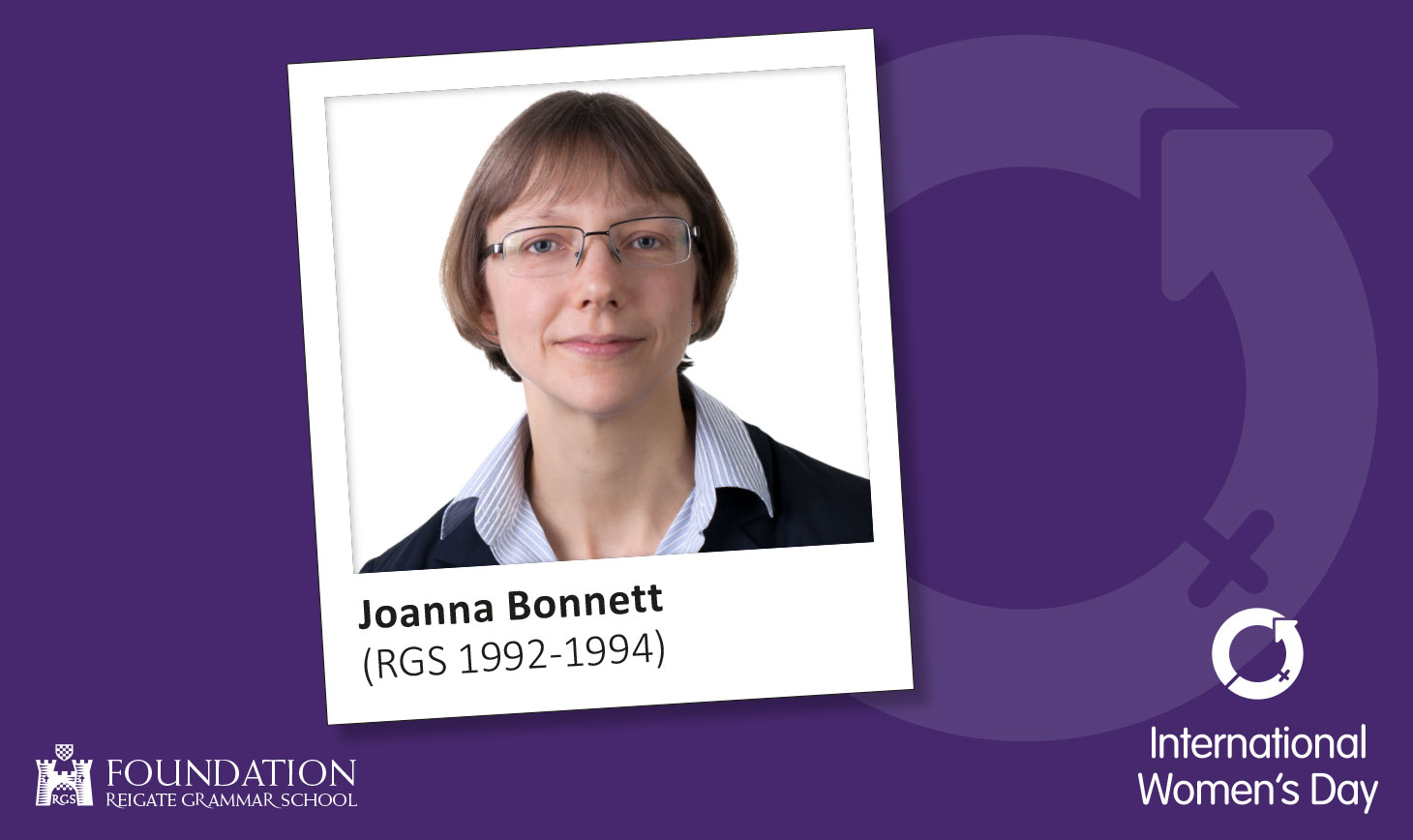
Inspiring Reigatian: Joanna Bonnett
With over 20 years’ experience as a Structural Engineer, Joanna Bonnett (RGS 1992-1994) is something of an expert on bridge design and construction. Now Vice President of COWI, a leading global consulting group, we caught up with Joanna to discover her career journey and her hopes for a more sustainable future.
You specialise in bridge design and engineering – can you share any noteworthy projects you have worked on and any challenges these presented
I have been lucky enough to work on a wide variety of projects, from a small architectural footbridge in Covent Garden to a viaduct carrying the M25. Throughout my career I have found that some of the most challenging and engaging projects are not those which are visually spectacular. The M25 structure was suffering from fatigue cracking and I led the team responsible for keeping the structure open and safe. We had to work around a lot of issues and deploy several innovative inspection and repair techniques. The number of times I was on call during the night during repair work led to the structure having the nickname of ‘bridge baby’ at home!
What would you say is your greatest achievement to date?
I was proud to receive the Young Structural Engineer of the Year Award, watched by my husband and one-week old baby daughter. I am glad she did not wait any longer to make an appearance or I might have missed the ceremony! My entry was based on my role on the Bridge of Aspiration, the footbridge in Covent Garden mentioned above. I was later able to show both of my daughters the bridge, although not to walk across it as it is for the use of members of the Royal Ballet School.
How might advancements in technology and materials change structural engineering in the future?
The biggest challenge facing structural engineering is the climate and biodiversity emergency. We need to find ways to build in low-carbon and even carbon negative ways. We also need to make bigger strides towards a circular economy to be truly sustainable. Much of civil and structural engineering is heavily dependent on steel and concrete, and the path to reducing the carbon impact of these materials is a challenging one. We will certainly see an increasing diversity in the materials we use, from a return to more timber structures, to use of advanced composites. There are also some exciting new materials under development such as concretes which may absorb more carbon dioxide than they produce.
Technology is a great enabler and this has removed much of the repetitive and routine work of the past. However, we still need an understanding of the engineering fundamentals to control the technology and to come up with imaginative solutions.
What is the greatest challenge you have had to overcome thus far?
I was part of a team who travelled to Rwanda in 2019 to build a rural ‘trailbridge’ to connect communities in conjunction with the NGO Bridges to Prosperity. The challenge of physically building a bridge rather than sitting in a design office – and doing so in a totally unfamiliar environment – was significant. Working alongside the local people with no common language but a shared purpose was something I will never forget.
You are passionate about the environment, what changes have been made in the engineering industry to tackle climate change?
The engineering industry is both the source of climate problems and potential solutions. Much of our infrastructure generates significant carbon emissions currently, but projects can also be part of the solution. Offshore wind generation is developing very fast and is a key enabler to the green transition. Carbon emissions counting is now part of almost every project and a central driver alongside cost and programme.
If you were castaway on a desert island, which luxury item would you want with you and why?
I would take a supply of dark chocolate! Yum!
What would you most like to tell yourself at age 13?
I would tell myself to try to have confidence and to accept every challenge offered as you often surprise yourself!
What more could be done in your industry to make your workplace more diverse, equitable and inclusive?
The industry is changing but the pace of change can be frustratingly slow. We need to break down the remaining barriers to inclusivity by ensuring that the culture is open and appreciative of a wide range of contributions. The change to flexible working for all has been positive, but we still see too many board rooms and conference panels with very little diversity.
